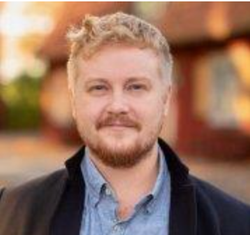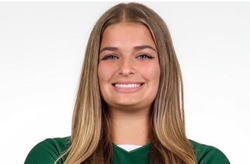
OR WAIT null SECS
Few US Children with ADHD Receive Recommended Psychosocial Treatment
More children with ADHD in US receive medication and school support than recommended psychosocial treatments.
George DuPaul, PhD
Analysis of data from the largest nationally drawn sample of children with attention-deficit/hyperactivity disorder (ADHD) collected in the past 2 decades revealed medication and school supports are more commonly provided than psychosocial treatments, and that rates of treatments vary between some demographic groups.
Principle investigator George DuPaul, PhD, Department of Education and Human Services, Lehigh University, Bethlehem, Pa., and colleagues examined responses from 2495 children and adolescents with ADHD from the 2014 National Survey of the Diagnosis and Treatment of ADHD and Tourette Syndrome (NS-DATA) to characterize lifetime and current rates of ADHD treatments overall and by demographic and clinical factors.
"This information can be used to describe the current status of ADHD treatment relative to best practices and may inform future research that seeks to identify barriers to receipt of recommended treatments," DuPaul and colleagues indicate, "as well as policy and programmatic efforts to promote more widespread use of recommended treatments for children with ADHD."
The investigators point out that current treatment guidelines recommend behavior therapy as first-line treatment for children younger than 6 years of age, and that a combination of behavior therapy and medication treatment is recommended for children aged 6—11 years and preferred for children aged 12 years and older.
The analysis of current and lifetime treatments was drawn from responses of parents of children aged 4—17 years to question whether their child had ever taken medication for ADHD, and whether they received any of 7 other forms of intervention: school-based education, support, intervention or accommodation; classroom management such as reward systems, behavior modification or daily report card; peer interventions such as peer tutoring; social skills training; cognitive behavioral therapy (CBT); alternative treatments such as dietary supplements; electroencephalogram neurofeedback or other kinds of biofeedback.
An affirmative response to any of these prompted follow-up questions to determine whether the treatment(s) were currently being received. In addition, parents were then asked whether they had ever, or were currently receiving training to help manage their child's ADHD.
The investigators found the most common treatment was medication, which had been received by 90.8% of children. The second most common was school supports, received by 85.8% of children.
Almost two-thirds of children (62.2%) have received at least 1 psychosocial treatment: social skills training (38.7%), parent training (30.9%), peer intervention (30.2%) and CBT (19.8%). Less than one-fifth received dietary supplements (17.8%) and fewer had ever received neurofeedback (11.4%).
The treatment rates were found to vary somewhat between demographic groups, although there were no statistically significant differences by child gender or primary language used in the home. Treatment rates were also generally similar across ethnic groups, except medication treatment was more common among non-Hispanic children than Hispanic children. DePaul and colleagues suggest this could possibly be attributed to cultural attitudes toward ADHD medication use.
Younger children (4—11 years) were significantly more likely than older children (12–17 years) to receive each type of treatment, with exception of parent training and peer intervention. Treatment rates of all types except medication were also found to significantly differ with the type of healthcare coverage. Rates of school supports and psychosocial treatment were highest among children with public insurance and lowest among those without insurance.
"Our study found that most children and adolescents with ADHD had taken medication, while fewer had received psychosocial treatments," lead author Melissa Danielson, MSPH, statistician, National Center on Birth Defects and Developmental Disabilities, Centers for Disease Control and Prevention (CDC) commented to MD Magazine. "Efforts to increase access to evidence-based behavior therapy for children and adolescents with ADHD may be needed, such as telehealth, school-based services, or behavioral health integration into pediatric primary care."
The analysis of survey data on treatment of ADHD in the US was published in the January Journal of Pediatrics.
Related Coverage >>>
Untreated ADHD Increases Risk of STIs
Study Explores Why Children With ADHD, ASD Receive Late Autism Diagnosis
More Parents of ADHD Children Seek Info from Internet than from Provider


